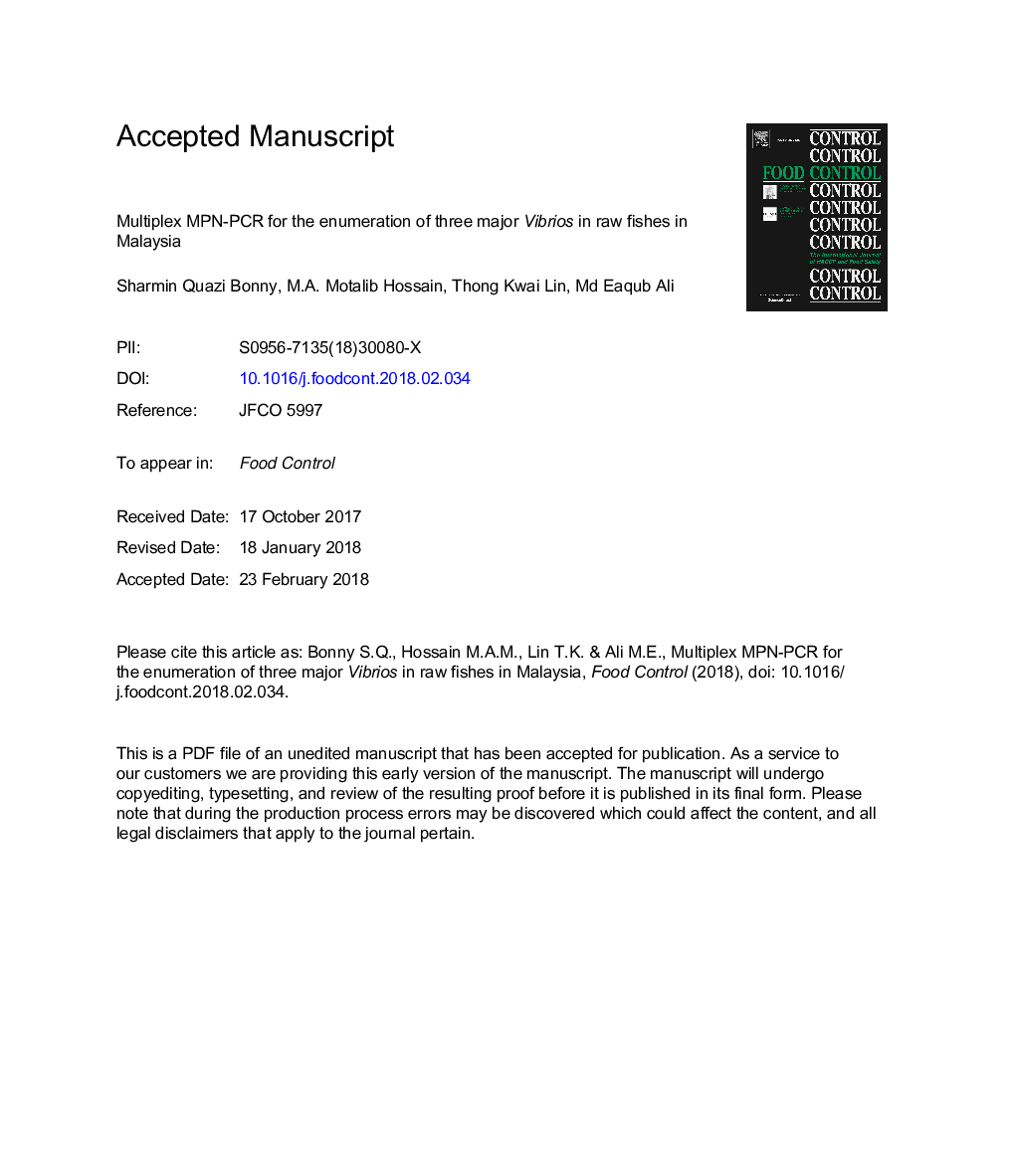| Article ID | Journal | Published Year | Pages | File Type |
|---|---|---|---|---|
| 8888046 | Food Control | 2018 | 29 Pages |
Abstract
Vibrio parahaemolyticus, Vibrio cholerae and Vibrio vulnificus are the most notorious fish borne-pathogens responsible for several deadly diseases in human. However, the prevalence of these three pathogenic vibrios in Malaysian fishes has not been thoroughly investigated, leaving a study gap for the tracing of possible Vibrio outbreak through carrier fish consumption. The most-probable-number-PCR (MPN-PCR) assays are highly sensitive for the identification of a single bacterial pathogen but they have not been applied for the discrimination of major vibrios in a multiplex platform. This study coupled MPN method with Multiplex PCR to differentiate three major vibrios in a one test platform. A total of 120 fish samples were analyzed and the prevalence of V. parahaemolyticus, V. cholerae, and V. vulnificus was 48.33%, 27%, and 32.50%, respectively. When simplex MPN-PCR was applied similar results were obtained at Pâ¯<â¯0.05, validating the accuracy of multiplex MPN-PCR. The microbial loads of V. parahaemolyticus, V. cholerae, and V. vulnificus in the tested samples were 0-2.43â¯Ãâ¯106, 0-2.16â¯Ãâ¯106, and 0-4.93â¯Ãâ¯105 MPN gâ1, respectively. Primers based on housekeeping pntA gene amplified V. parahaemolyticus (409 bp) and V. cholerae (338 bp) but virulent vvhA gene detected V. vulnificus (205 bp). Thus the 27-48% prevalence of targeted vibrios in consumable fishes indicated there is considerable risk of Vibrio onset in Malaysia due to the consumption of undercooked or raw fish products.
Keywords
Related Topics
Life Sciences
Agricultural and Biological Sciences
Food Science
Authors
Sharmin Quazi Bonny, M.A. Motalib Hossain, Thong Kwai Lin, Md Eaqub Ali,
